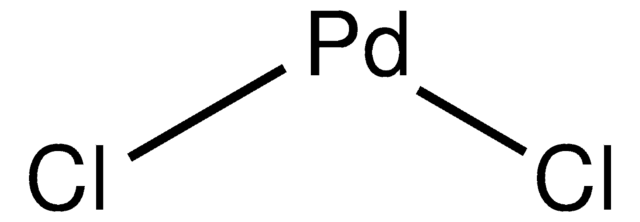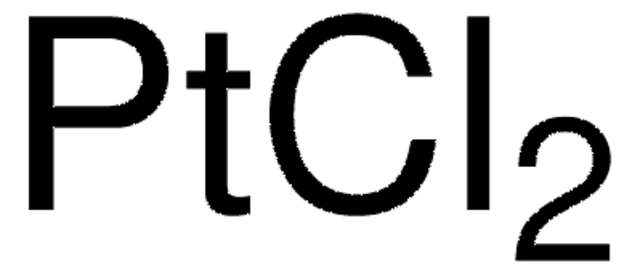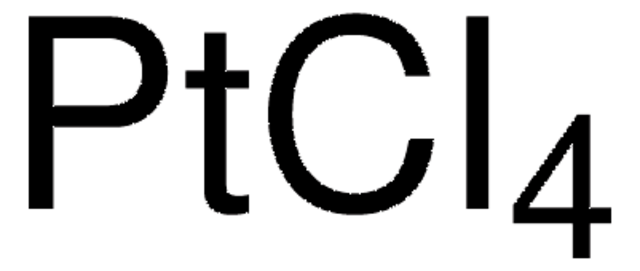204021
Ammonium hexachloroplatinate(IV)
99.995% trace metals basis
Sinonimo/i:
Ammonium platinic chloride, Platinum(IV)-ammonium chloride
About This Item
Prodotti consigliati
Livello qualitativo
Saggio
99.995% trace metals basis
Stato
solid
Impurezze
≤55.0 ppm Trace Metal Analysis
Densità
3.07 g/mL at 25 °C (lit.)
Stringa SMILE
[NH4+].[NH4+].Cl[Pt--](Cl)(Cl)(Cl)(Cl)Cl
InChI
1S/6ClH.2H3N.Pt/h6*1H;2*1H3;/q;;;;;;;;+4/p-4
PCCGQTHFYHJATL-UHFFFAOYSA-J
Cerchi prodotti simili? Visita Guida al confronto tra prodotti
Caratteristiche e vantaggi
Avvertenze
Danger
Indicazioni di pericolo
Consigli di prudenza
Classi di pericolo
Acute Tox. 3 Oral - Eye Dam. 1 - Resp. Sens. 1 - Skin Sens. 1
Codice della classe di stoccaggio
6.1C - Combustible acute toxic Cat.3 / toxic compounds or compounds which causing chronic effects
Classe di pericolosità dell'acqua (WGK)
WGK 1
Punto d’infiammabilità (°F)
Not applicable
Punto d’infiammabilità (°C)
Not applicable
Dispositivi di protezione individuale
Eyeshields, Faceshields, Gloves, type P2 (EN 143) respirator cartridges
Scegli una delle versioni più recenti:
Possiedi già questo prodotto?
I documenti relativi ai prodotti acquistati recentemente sono disponibili nell’Archivio dei documenti.
I clienti hanno visto anche
Il team dei nostri ricercatori vanta grande esperienza in tutte le aree della ricerca quali Life Science, scienza dei materiali, sintesi chimica, cromatografia, discipline analitiche, ecc..
Contatta l'Assistenza Tecnica.













